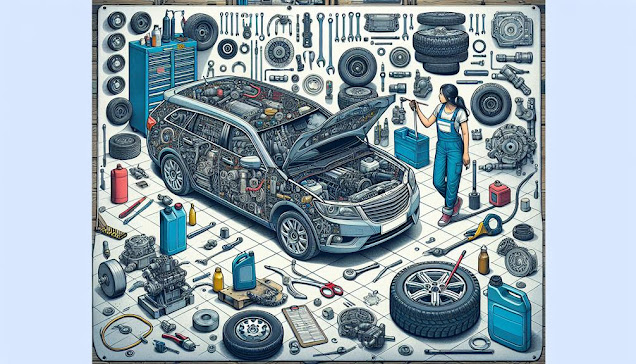How to Identify and Fix Timing Belt and Chain Problems in Toyota Engines
In the realm of automotive maintenance, particularly when it comes to Toyota vehicles, the integrity of timing belts and chains is crucial for the overall health and performance of the engine. A failure in these components can lead to catastrophic engine damage, often resulting in costly repairs or even complete engine replacement. Therefore, it is essential for vehicle owners and mechanics to recognize the early signs of wear or potential failure, such as unusual noises, engine misfires, or oil leaks around the timing cover. These indicators are often the first clues that something is amiss with the timing components, and they should not be ignored.
Accurate diagnostic procedures, coupled with the use of specialized tools, are necessary for a thorough evaluation of the timing system. However, what is often less discussed is the nuanced approach required during the replacement process itself. Even slight deviations in alignment during installation can lead to inefficiencies in engine operation or cause further damage down the line. This raises an important question: what are the best practices for ensuring the accurate installation of new timing belts and chains in Toyota engines, and how can one mitigate the risks associated with incorrect installation?
Identifying Timing Belt and Chain Issues
Recognizing the early signs of timing belt or chain failure in Toyota engines is critical for preventing severe engine damage and ensuring the vehicle's longevity. The timing belt or chain is a vital component that synchronizes the movement of the engine’s camshaft and crankshaft, ensuring that the engine’s valves open and close at the correct times during each cycle. Any disruption in this synchronization can lead to engine misfires, loss of power, or even complete engine failure.
One of the most common signs of a failing timing belt is a ticking noise coming from the engine. This noise is often a result of the belt becoming loose or worn, and it indicates that the belt is at risk of snapping. In the case of a timing chain, similar symptoms may occur, but the noise is often more metallic due to the chain’s construction.
Engine misfires are another telltale sign of timing component failure. If the timing belt or chain is not functioning correctly, the engine’s combustion process can become unsynchronized, leading to misfires and a noticeable decrease in performance. Additionally, visible signs of wear, such as cracks, fraying, or glazing on the timing belt, are clear indicators that it needs to be replaced. For timing chains, excessive slack or signs of wear on the tensioner or guides suggest that the chain is due for replacement.
Oil leaks around the timing cover are also a significant concern. Oil can degrade the material of a timing belt, leading to premature failure, while in the case of timing chains, oil leaks can indicate worn seals or gaskets that need attention.
Best Practices for Replacement
When it comes to replacing a timing belt or chain in a Toyota engine, precision is key. The replacement process is intricate and requires careful attention to detail to ensure that the new component is installed correctly.
For timing belts, the process begins with ensuring that the engine is cool and that the battery is disconnected to prevent any electrical hazards. Next, the mechanic must remove the engine cover and any other components that obstruct access to the timing belt, such as the air intake assembly and coolant hoses. It is crucial to keep track of all bolts and fasteners during this process, as they often vary in size and must be reinstalled in their original positions.
Once the timing belt cover is removed, the mechanic must carefully align the timing marks on the camshaft and crankshaft gears before removing the old belt. This step is critical for maintaining the correct timing during reassembly. The new belt should be installed with precision, ensuring that it is properly tensioned and aligned with the timing marks.
For timing chains, the process is similar but often more involved due to the chain’s placement deeper within the engine. After removing the timing chain cover, the mechanic must assess the condition of the chain, gears, tensioner, and guides. Any worn or damaged components should be replaced along with the chain to prevent future issues.
Reassembly requires the same level of care, with each component being installed in reverse order. After the installation is complete, the engine should be thoroughly tested to ensure that it runs smoothly and that the timing is correct.
In conclusion, the maintenance and replacement of timing belts and chains in Toyota vehicles are critical tasks that require both skill and attention to detail. Research indicates that timing belt failures are responsible for a significant percentage of engine breakdowns each year, underscoring the importance of timely maintenance.
By recognizing the signs of wear early and adhering to best practices during replacement, vehicle owners and mechanics can prevent catastrophic engine failures and ensure that their Toyota vehicles continue to perform reliably. This approach not only safeguards the integrity of the engine but also extends the overall lifespan of the vehicle, providing peace of mind and optimal performance on the road.



Comments
Post a Comment